Lily Frewen, ‘Remnants’
Discovering the freedom of watercolour, Lily Frewen found joy.
Watercolour allows her to make mistakes and turn those random accidents into positive happenings.
"I kind of draw places and memories out of those accidents."
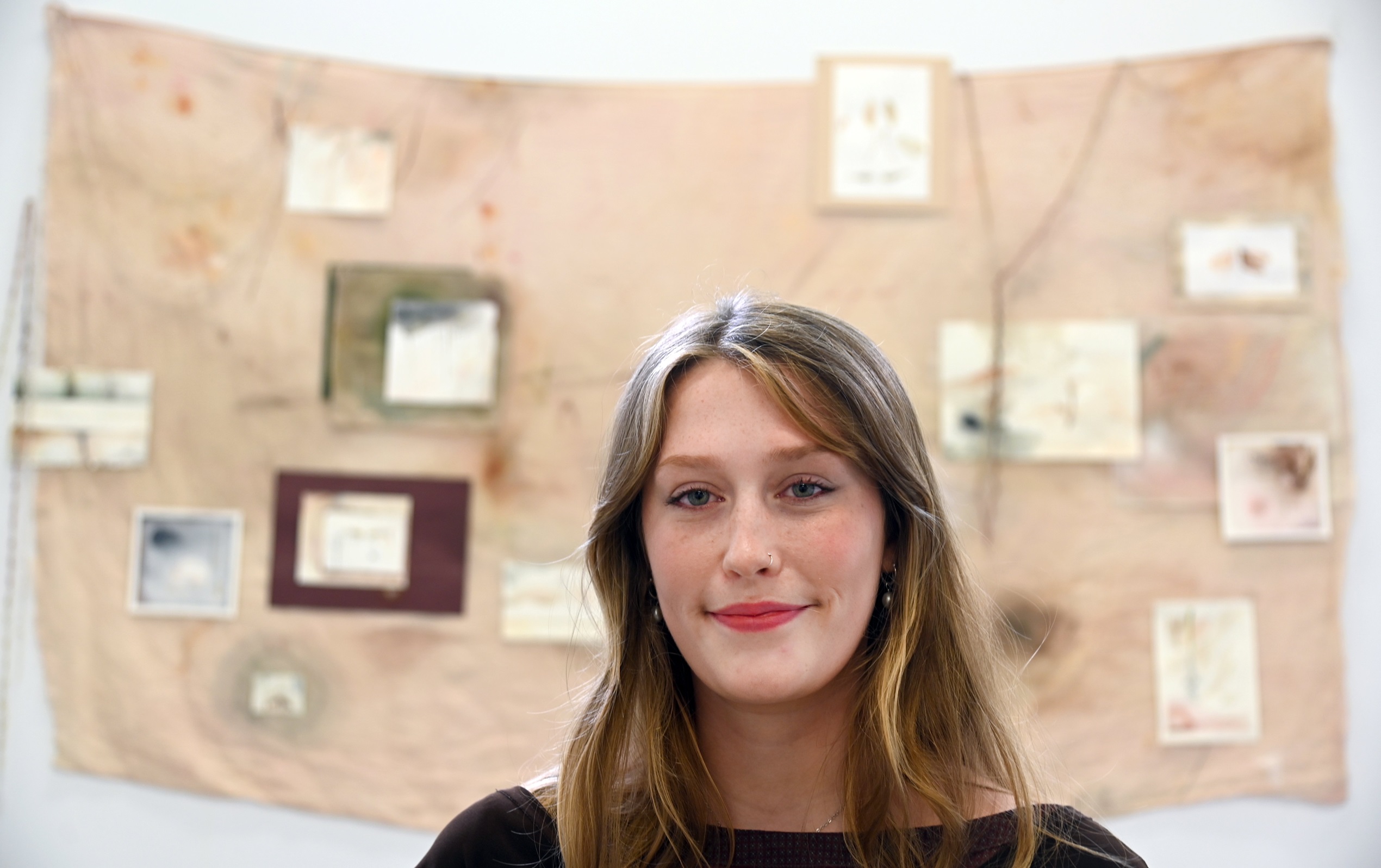
One thing that has stayed the same is the inspiration she gets from her time on Otago Peninsula and how that is reflected in her work.
Her graduating exhibition features a series of landscapes on cotton paper as well as a linen collage, the background, on to which are small paper works, the characters or places she has zoomed in on.
"This one I've done it on linen and also some cold-pressed and hot-pressed watercolour paper. I've also used pastels and I've used almond skin and avocado skin and I've used a little bit of old-fashioned dirt as well to create the texture and kind of stain-like appearance on this work."
Draped over the work is a chain made by a friend.
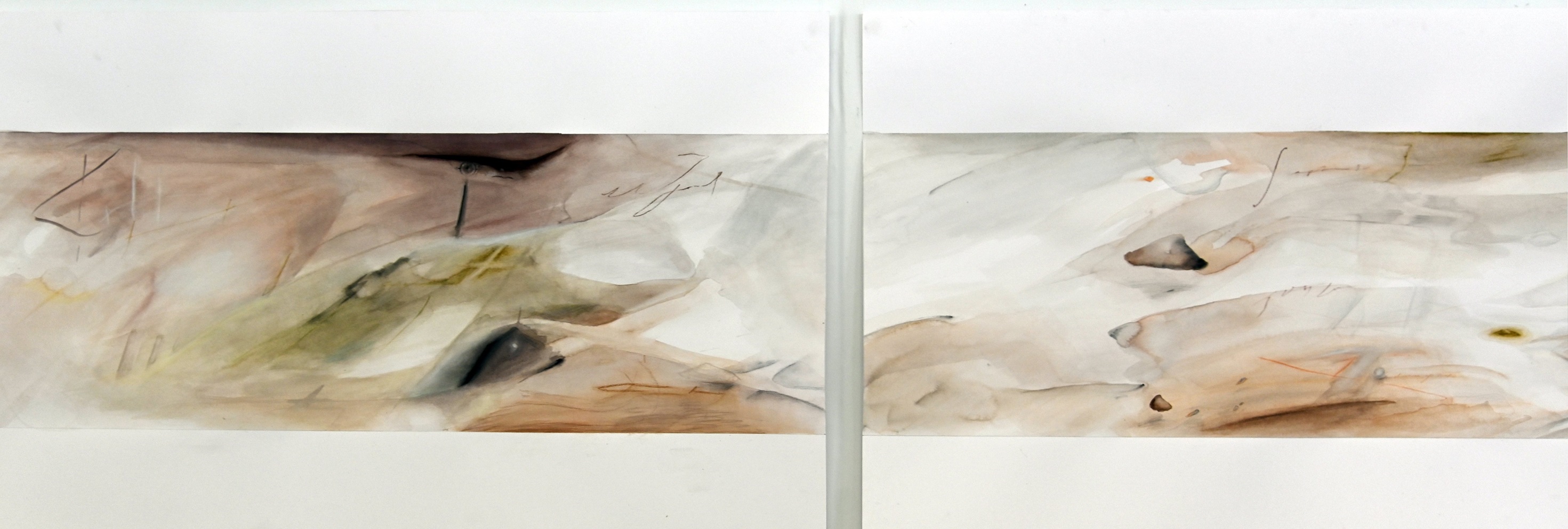
The landscapes suggest certain things are imposed on to land and she feels it is a way for her to connect with the world around her and observe the colours and shapes surrounding her. In a world of AI and screens it seems that many people do not spend time noticing these things, she says.
"I use words in my paintings that are kind of like abstract words, not actual words, to kind of suggest thoughts maybe or feelings and the idea of language. I think of my paintings as stories without a clear start or end, that reflect the slippery nature of time. "
Frewen, who is from Dunedin and studied at Columba College, came to art school after discovering studying law was not for her. "I always wanted to do painting."
Her present work is resonating with her so she does not feel like she is finished with it. So she is still uncertain about what she will do next year.
"I am really enjoying this layered approach, more like creating something and then putting a lot of different creations together to make a new thing."
Aurora Smyth, ‘Droplets from home’
Water ever so slowly drips from the necklace around Aurora Smyth’s neck.
The blown glass pendant is filled with water from the Waianakarua River near where Smyth grew up.

Having always been attracted to organic shapes and materials, Smyth wanted to incorporate that into her work.
"I was also drawn to sensation and how jewellery really often becomes subconscious adornment. So, all of my pieces also leak. They drip on you and make you very aware of their presence on your body."
The move to jewellery is a new one for Smyth, a former Waitaki Girls’ High School student, who first decided to study painting at Christchurch’s art school.
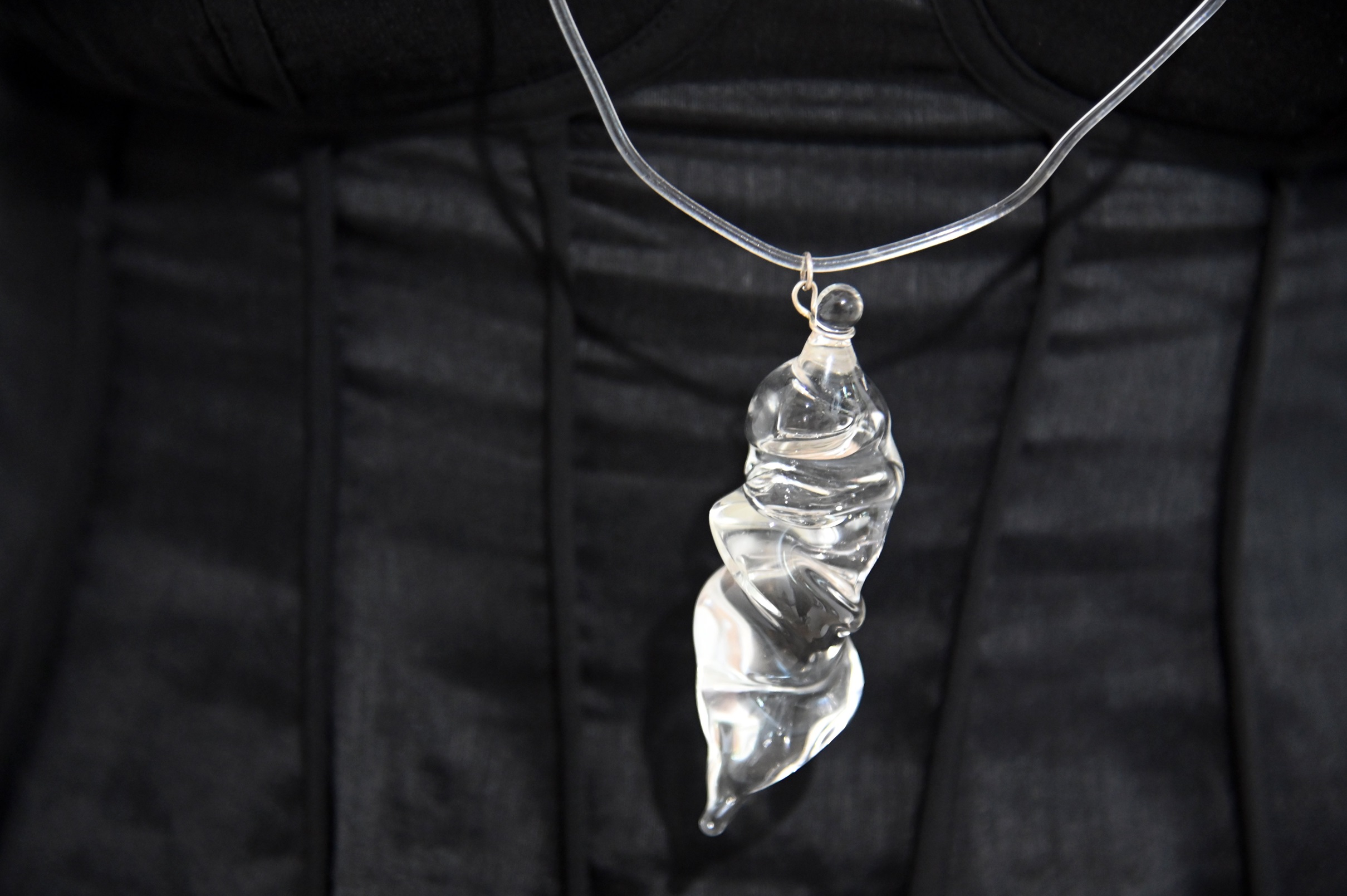
"I absolutely love it. That is what I want to do."
So she came to Dunedin School of Art, one of the few art schools were jewellery is taught, to finish her degree.
The idea for her graduating project came from playing around with ice and its sensation on the body. She wondered how she could encapsulate the sensation and came up with the idea of sealing it in glass.

"I’ve had many casualties. It’s a very fragile material and it has a lot of tension when you’re trying to push it in quite obscure ways so a lot of them have cracked and smashed and broken but [it is] fun to work with."
She was pleased with how the works turned out especially the reflections from the glass and water as they play on the wall.
Smyth also works with more traditional metals and gemstones for her own line of jewellery and plans to continue learning metalsmithing skills next year working one day a week with a local jeweller.
Kahu Kaan, ‘Bend’
From a distance it looks as if a tī kōuka or cabbage tree has sprouted from the floor.
Up close you realise the leaves are made of metal and the tree is made of sections, some of it from wood from the tī kōuka.
"It’s bit of an illusion I guess," graduating art school student Kahu Kaan says of his installation.
There are four parts to his installation, the cabbage tree, carved fence posts, video and sculptured shells.
"My work is a bit of exploration of natural but also urban experiences and I guess the meeting points between the two."
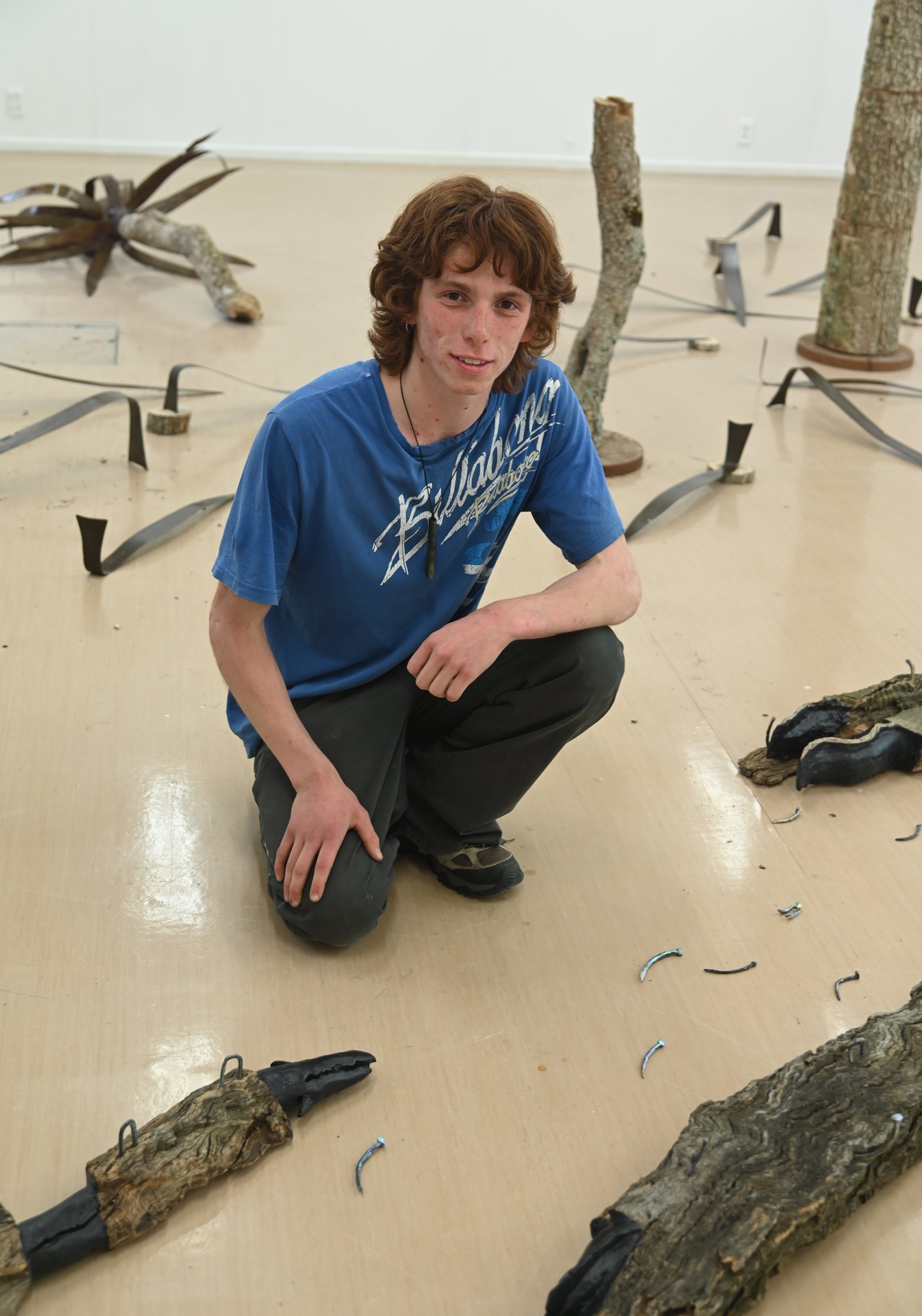
"I think material was a big one for me."
Using his photography skills, he has also created a series of videos featuring urban sites and water from around the art school along with film of a trap catching tuna or eels.
"So it’s sort of kind of about the journeys they go on and the journeys we go on and how that crosses over."
The aged fence posts were gifted to him and he has spent time carving into the wood after he realised they were the perfect material to reference tuna or eels travelling the river.
"So I kind of like them sort of following the one path, like the collective journey."

He used yarn soaked in cement and wound in circles building up layers to create shell-like forms.
"It was just about like mimicking those lines and layers you get in actual shells, but in something that’s obviously very un-shell like."
As he is from Dunedin and is a former Bayfield High School pupil, he believes the installation naturally "speaks to this place as well".
Kaan heads to India on a food sustainability scholarship early next year so he has not made any firm plans for the rest of the year.
"I’ve sort of just been pretty focused on this."
Rosemary Auckram, ‘Archive of My Stuff’
Heading overseas to live, Rosemary Auckram knew she needed to downsize her material possessions.
"I'm sort of trying to condense all my stuff down as much as I can and make some memories for myself in the future."
So she dug into the denim material she has collected over time and began to stitch it together to make book covers.
Other materials she had lying around were turned into pulp and made into hand-made paper.
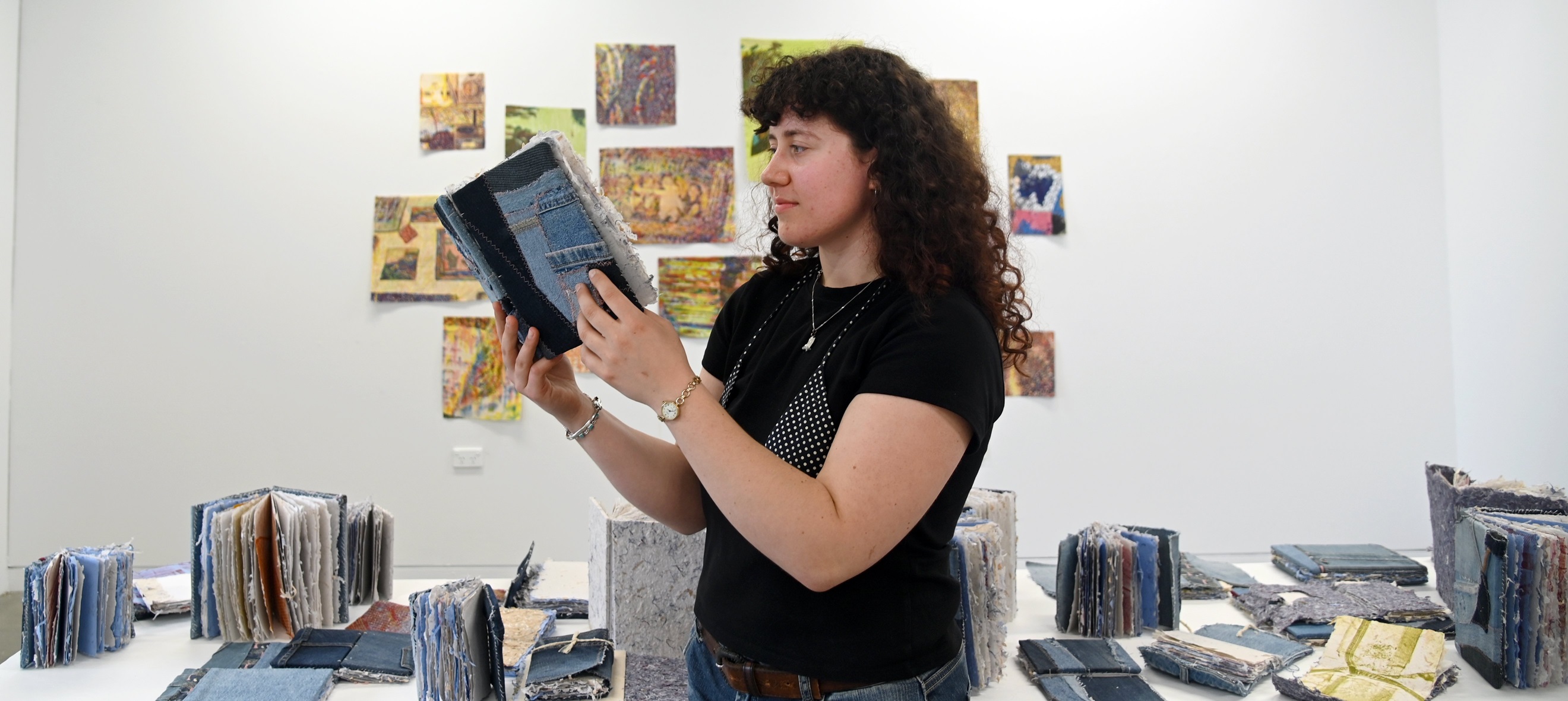
"I had a denim craze last year where I was recycling a lot of pants and had a lot of failures, so I still have a lot left, which I think is pretty telling of the way the world is right now."
Auckram, who is from Dunedin and attended Kavanagh College (now Trinity Catholic College), then made 350 sheets of A3 paper and began to stitch the papers and covers together. She kept going until she ran out of materials, creating 37 notebooks in all.
It was a learning process with the quality of paper she made improving with each sheet.
"I don't often mind the rips and the tears, which are pretty common."
The books are an extension of printmaking which she discovered in her first year of art school.

Also part of her exhibition was screen printing and drawings.
"A lot of them are CMYK, so four-layer screen prints, and each screen is a different colour with black grays. And there's oil pastel on some of them and also monoprinting through the screen, which is quite expressive and messy like that one on the bottom."
It is an area she hopes to get work in when overseas as she likes keeping her hands busy.
TO SEE
SITE, Dunedin School of Art gallery, Regio St, November 15-18.











